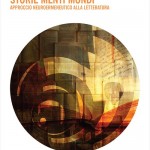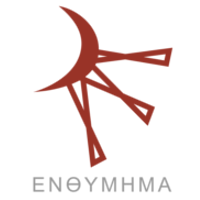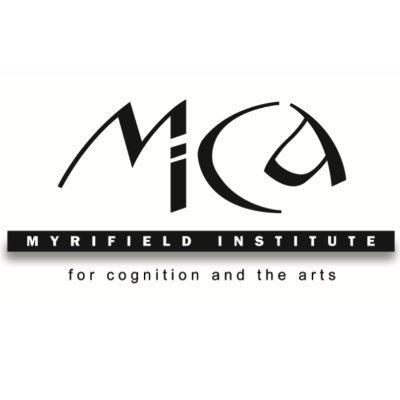Research Projects
European Network in D-Flexible Teaching
Programma globale: ERASMUS+
Programma specifico: KA2 – Cooperation and Innovation for Good Practices
Call: 2021
Project Number: 2021-1-ES01-KA220-HED-000027551
Durata: 36 mesi (14/02/2022 – 13/02/2025)
Project Manager: Sonia Maria Santoveña Casal
Project Manager UNICT. Renata Gambino
The aim of this project is to re-establish a university network that enables the strengthening of connections between European universities, starting with the teaching staff as the main vector of intra- and inter-university communication that can facilitate the establishment of a knowledge transfer network on the good use of digital tools and the development of flexible teaching practices.
NEUROHERMENEUTICS - Prof. Grazia Pulvirenti & Prof. Renata Gambino
NEUROHERMENEUTICS Gambino – Pulvirenti. This concept contributes to the current debate about the linkage between literary, cognitive and neuroscientific studies, focusing on the relationship between mindbrain processes, mirrored in the formal features of the text and the strategies activated in order to involve the reader in imagining, emotionally feeling and cognitively getting meanings out of the literary experience. This perspective makes it possible to discover hidden, latent and ambiguous meanings of the literary text in relation to the culture in which it is inscribed, offering new insights in mind processes that are engaged in imagining stories, as well as in the aesthetic experience of reading them.
NEUROHERMENEUTICS OF SUSPICION: Gambino – Pulvirenti We argue that Ricoeur’s concept of suspicion is significant for present-day neurocognitive studies on literature, with regard to the issues of embodiment, bodily simulation, and interpretation of textual latent meanings. Ricoeur’s practice of suspicion is one of the two poles of our present inquiry on literary texts, being the second a neurohermeneutic approach that we have developed in past studies (Gambino and Pulvirenti, Storie, menti, mondi; “Neurohermeneutics. A Transdisciplinary Approach to Literature”). We will refer to Ricoeur’s hermeneutics of suspicion, a principle which is often quoted in literary critical discourse but not always precisely defined, considering it as an act of mistrustful interpretation, which bases on intersubjectivity and aims to disclose latent and hidden meanings in sign systems, specifically in literary texts, which is the field of our inquiry. In the perspective of what we here define as neurohermeneutics of suspicion, the reader becomes an interpreter, questioning the text with regard to its multilayered surface features as marking inferential clues unveiling secondary meanings. The meaningmaking process depends on a creative act of the reader’s imagination embodying mental (re-)construction of the situation described by a text. Therefore, suspicious interpreting does not rely in either the text, the author, the reader or the cognitive and cultural context, but in their complex and dynamic relationship, pivoting around the common human nature rooted in corporeity. We claim that particularly in the postcritical venture, Ricoeur’s hermeneutics may be helpful in refiguring the pleasure of deciphering the fictional worlds of literature, challenging the reader to “play” with the text intended as a terra incognita of inexhaustible multiple meanings.
E-READ Evolution of reading in the age of digitalization (COST Action IS1404): Renata Gambino
In Europe, one in five lacks adequate reading skills. There is much speculation about the cognitive implications of digitization, and empirical evidence indicates that affordances of screen devices might negatively impact cognitive and emotional aspects of reading. The goal of this Action is to improve scientific understanding of the implications of digitization, hence helping individuals, disciplines, societies and sectors across Europe to cope optimally with the effects. Based on a multidimensional, integrative model of reading, and combining paradigms from experimental sciences with perspectives (e.g., diachronic) from the humanities, the Action will develop new research paradigms, and metrics for assessing the impact of digitization on reading. These metrics enable the development of evidence-based knowledge of paper and screen reading, and provide guidance for practitioners, policy makers, publishers and designers. We have had the opportunity to empirically test the main model, that we propose as FAM – Foregrounding Assessing Matrix, running a pilot study with experimental psychologists of the “Experimental and Neurocognitive Psychology Unit, Dahlem Institute for Neuroimaging of Emotion (D.I.N.E.), Center for Cognitive Neuroscience Berlin (CCNB)”.
THE SIMILE AS POETOLOGICAL FIGURE OF THOUGHT Pulvirenti – Gambino Simile as basic rhetorical figure of poetry is rooted in analogical thought and turns out to be a fundamental and powerful poetic device, because it matches the fundamental thinking strategy of conceptual integration, which is mainly used unconsciously in our cognitive processes and which becomes a meaningful productive strategy in literary texts. The basic dynamics of the simile lies in the human mental ability to project and integrate images and concepts into an organic process. Therefore, the poetic simile sets relations between more or less analogous concepts, objects or phenomena in order to produce new possibilities of sense-making through images in which nature is aesthetically represented, the unknown becomes known, the unspeakable becomes sayable.
IMAGINING IMAGINATION: Pulvirenti – Gambino Art is the distinctive expression of the human mind and the result of a creative process of experiencing and understanding reality and of elaborating this knowledge through images, metaphors and symbols. At the very core of art production and of experiencing art, there is one of the most surprising and complex functions of the human mind: imagination. Imagination is a mysterious, endogenous, dynamic and emergent process involving a cluster of cognitive faculties and emotional experiences activated in order to construct meaning. In fact the interaction of brain, body, environment and culture is elaborated into imaginative representations generating the stable consistence of the world in which we move and act as well as the feeling of oneself within the world. We think that analysing the mind processes at work by producing and experiencing art could help to open new perspectives in the study of the mind, of the way complex experiences are elaborated, of what is self-consciousness, and of the staggering creative power of “folding and unfolding” complex experiences out of simple sense-bearing units. We started our work as literary scholars by focussing on texts describing the peculiar experience of eliciting images which seem to be created regardless to the fundamental structure of our cognitive faculty: no human vital relations of time, space, and body perception. These images turn out to be sort of meta-representation, i.e. the allegorical figuration of the act of imagining: they are “imagining imagination”.
COGNITIVE LITERARY ANTHROPOLOGY Abramo – Pulvirenti – Gambino Following Wolfgang Iser’s studies, literary criticism could no longer avoid a confrontation with the phenomenology of the act of reading. This has led the analysis of a literary text towards new researches regarding the reader’s response theory. In particular, it is impossible to define the field of literary investigation, its coordinates and characteristics, without considering the anthropological dimention which defines the epistemological nature of literature itself. We propose in this study a new approach that we call “neurohermeneutic approach”. Unlike an analytical or descriptive approach, the neurohermeneutic approach investigates broth the relations that the reader’s mind establishes with the text figurations and how these figurations stimulates the reader’s mind in that inexhaustible, always new and surprising act of the reading.











